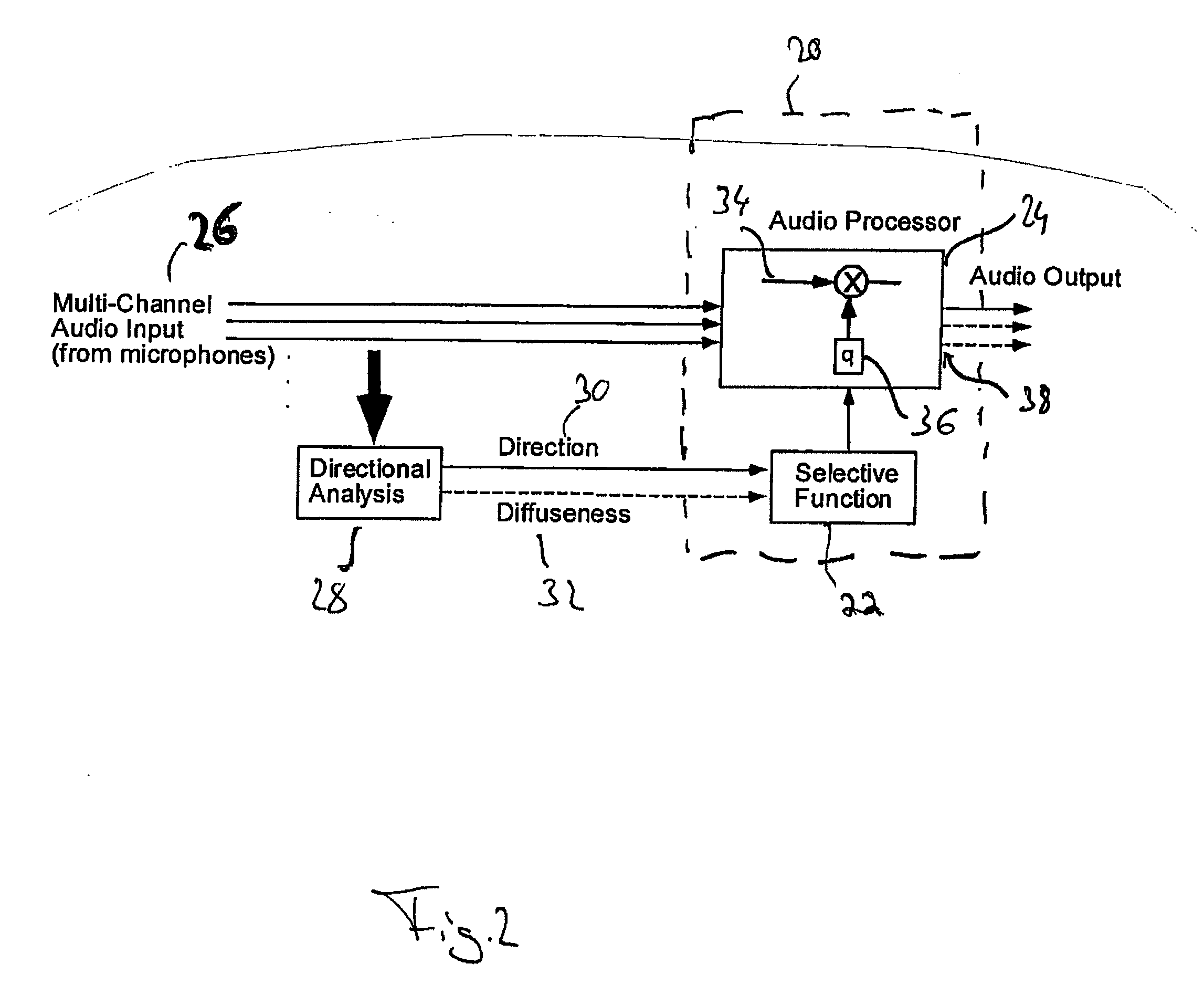Method and apparatus for enhancement of audio reconstruction
- Summary
- Abstract
- Description
- Claims
- Application Information
AI Technical Summary
Benefits of technology
Problems solved by technology
Method used
Image
Examples
Embodiment Construction
[0035]FIG. 1 shows an embodiment of a method for reconstructing an audio signal having at least one audio channel and associated direction parameters indicating a direction of origin of a portion of the audio channel with respect to a recording position. In a selection step 10, a desired direction of origin with respect to the recording position is selected for a reconstructed portion of the reconstructed audio signal, wherein the reconstructed portion corresponds to a portion of the audio channel. That is, for a signal portion to be processed, a desired direction of origin, from which signal portions shall be clearly audible after reconstruction, is selected. The selection can be done directly by a user input or automatically, as detailed below.
[0036]The portion may be a time portion, a frequency portion, or a time portion of a certain frequency interval of an audio channel. In a modification step 12, the portion of the audio channel is modified for deriving the reconstructed porti...
PUM
 Login to View More
Login to View More Abstract
Description
Claims
Application Information
 Login to View More
Login to View More - R&D
- Intellectual Property
- Life Sciences
- Materials
- Tech Scout
- Unparalleled Data Quality
- Higher Quality Content
- 60% Fewer Hallucinations
Browse by: Latest US Patents, China's latest patents, Technical Efficacy Thesaurus, Application Domain, Technology Topic, Popular Technical Reports.
© 2025 PatSnap. All rights reserved.Legal|Privacy policy|Modern Slavery Act Transparency Statement|Sitemap|About US| Contact US: help@patsnap.com



